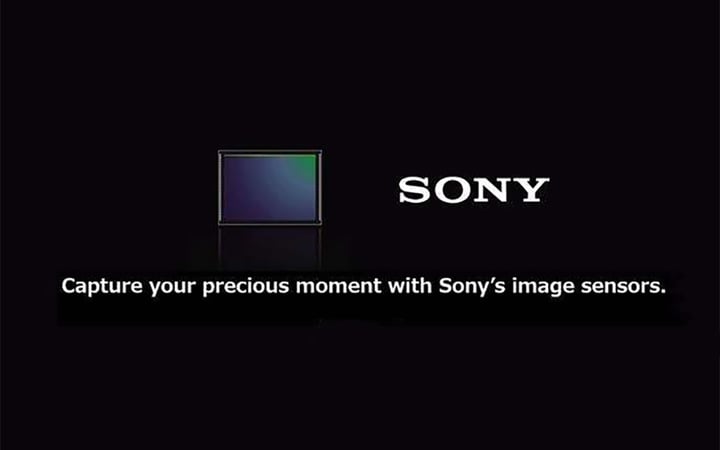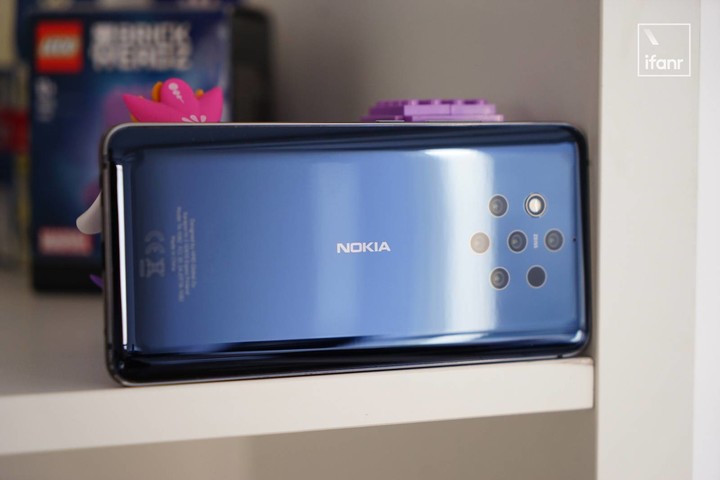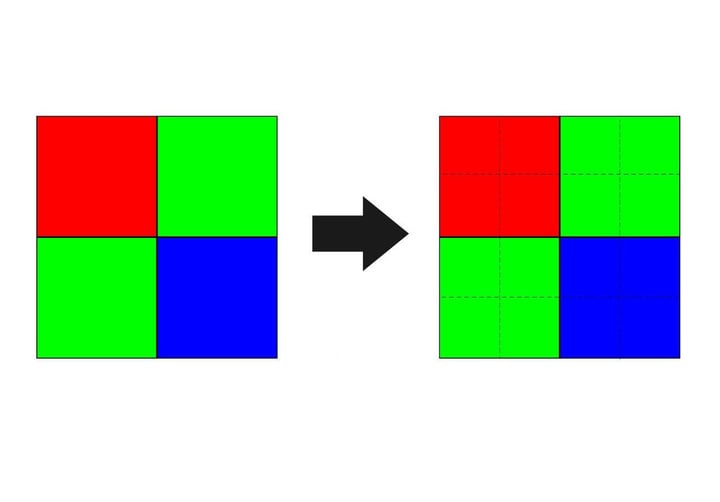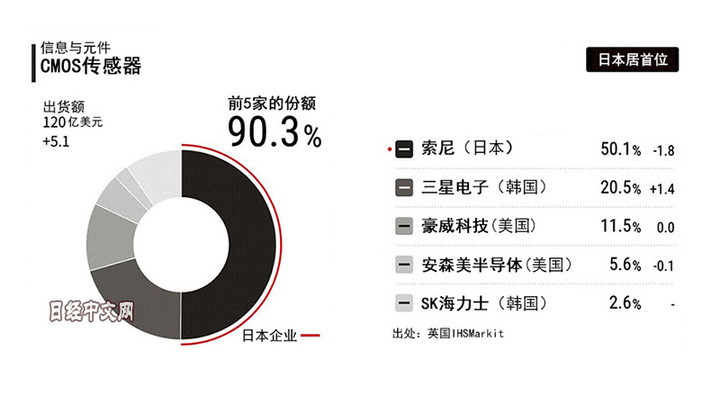2019 is a special year for Sony.
This year, Sony ’s PS4 console shipments exceeded 100 million units, successfully surpassing the sales of the first generation PS consoles, It has become Sony’s most popular game console product, and such a result is basically within Sony’s expectations. What makes Sony even more happy is that the sales of the semiconductor unit in the second quarter of 2019 increased by 22.13% year-on-year, and the growth of net profit was as high as 59.5%, becoming the second largest source of revenue after the game console business , Of which image sensor revenue accounted for 86%.

Such achievements are not only related to Sony’s personal struggle, but the main reason is the history of smartphones entering the multi-camera era. process.
After the performance is saturated, the mobile phone’s focus shifts to taking pictures
After the smartphone industry has fully entered the multi-camera era, CMOS orders are flying into the Sony factory like paper. The top products are looking for Sony to customize COMS separately, such as Huawei Mate and P series customized IMX 600 series, Apple customized CMOS, etc. These flagship models not only provide Sony with a small profit, but also strengthen the Sony CMOS Positioning.

▲ Huawei Mate 30 Pro with IMX 600 series
The flagship mobile phones want to compare the camera parameters and purchase Sony’s IMX 586 and IMX. The 486 series was fought fiercely on the outsole + high-resolution position. Because Samsung’s GM1 series could not match the performance of IMX 586, the spectacle of IMX 586 from 4000 yuan to 1,000 yuan mobile phone appeared on the market.

▲ Multi-shot Collector Nokia 9 Previews
In addition to the main camera and front lens, almost all mobile phones in 2019 will use more than one lens, of which quite a few Some are Sony-supplied CMOS.
In order to meet the large number of CMOS demands in the market, Sony’s semiconductor factories have entered 24/7 continuous-time rotation. Even so, it still cannot meet the market demand for Sony CMOS.
Why phone manufacturers should buy Sony’s CMOS even if they line up? How good is Sony CMOS? To understand why Sony can occupy such an important position in the mobile terminal CMOS market, we still return time to 2012.
Behind the black technology is Sony’s continuous research and development for more than ten years
In 2012, Sony introduced the first stacked CMOS, which replaced the original back-illuminated CMOS image with a chip of a signal processing circuit. Sensor support substrate. It is thinner than the previous generation back-illuminated CMOS, and has greatly improved the picture quality. At that time, Sony was already the manufacturer with the highest market share of mobile phone CMOS, with market share hovering around 30%. After the first release of stacked CMOS, Sony ’s position as the CMOS boss of mobile phones has been further consolidated.
 < / p>
< / p>
▲ 2011 CMOS market ranking Sony is the third child Picture from: image-sensors-world
After improvement, Sony ’s second-generation stacked CMOS (IMX 214) was used on the iPhone 6 / 6s. In the 5 years of production, 250 million units were sold. . The excellent imaging quality and huge shipments of the iPhone 6 series have made Sony a firm leader in mobile CMOS.
 < / p>
< / p>
▲ iPhone 6 with Sony CMOS Picture from: apple
After dominating the mobile phone CMOS market with leading-edge stacked CMOS, Sony did not slacken, and launched the first in 2017. A 3-layer stack of CMOS, which is mounted on its own Xperia XZ Premium as a unique black technology. 3-layer stacked CMOS adds DRAM cache on the basis of double-stacked CMOS.The image information can be directly cached in the CMOS chip.

▲ Sony 3-Layer Stack CMOS Technology
With this layer of “buffering”, the problem of slow CMOS continuous shooting speed of mobile phones was solved before, and continuous shooting was improved. The speed of the IMX 400 can even shoot slow motion at 960fps at a resolution of 720P. At that time, people had never seen such a “black technology”, after all, most cameras at the time could not shoot 960fps video. With the innovation of video shooting, adding DRAM to CMOS is even more important.

▲ 960 fps slow motion shooting with IMX 400
That is to pave the way for multi-frame synthesis technology. With the addition of DRAM cache, CMOS can shoot continuously in a short time. Multiple photos are algorithmically combined into a photo with less noise and higher tolerance. The night scene mode and HDR we commonly use now are also applications of this technology.

▲ iPhone HDR technology Picture from: apple
It wasn’t until half a year later that Samsung, the “second child” in the CMOS market, launched a three-layer stack of CMOS. “No one has it.” People clearly see Sony’s huge advantage in leading the industry in CMOS technology. Cooperating with the “IMX 600” series that Sony customized for Huawei later, Sony finally boarded the “Altar of CMOS” and became the representative parameter of “Mobile phone photography”.

▲ QuadBayer array brought by IMX 600 Picture from: @ Glory Old Bear
Until Samsung launched the 48-megapixel GM1 series, which was slightly ahead of Sony in terms of pixel parameters, but Sony immediately launched IMX 586, Once again, it has secured lens orders for most mid-range mobile phones on the market. Until now, IMX 586 is still the first choice for most domestic mobile phones. The ToF rangefinder lens equipped by the Android flagship in 2019 is only Sony’s solution.

▲ TOF lens shooting effect Picture from: Sony
In addition to almost “monopolizing” the main camera of the mobile phone, most other lenses in the multi-camera era also use Sony CMOS For example, the 40-megapixel ultra-wide-angle customized by Huawei in the Mate 30 series, the selfie lens on the front of most mobile phones, and Sony’s lens parts basically cover every mobile phone on the market. As for other vacancies in the market, for example, the “depth of field” lens and “macro” lens of some mobile phones are provided by Samsung and OV (Howe Technology).
It ’s not enough to eat enough Sony wants “Jiangshan Yonggu”
The largest number of shipments in the market are also often these phones. It seems that Sony did not cover all the lens supply, in fact, Sony’s production speed has not kept up with market demand. In this case, Sony can only catch the big fish by “net fishing”, and missed this part of the market is actually Sony’s helplessness.
Faced with demand for smartphone CMOS that exceeds its expected growth rate, Sony has started to actively expand its production capacity. Before March 2021, Sony allocated half of its capital expenditure to the field of image sensors, and these research funds will reach 600 billion yen (about 5.4 billion US dollars). For Sony, these research and development funds will continue to keep Sony ahead of CMOS technology, so as not to closely follow Samsung Semiconductor and domestic OV (Howell) to erode Sony’s territory in the CMOS market.

▲ 2019 CMOS market share Picture from: Nikkei Chinese website
In terms of capacity, Sony has also responded quickly. Back in 2016, Sony acquired a Toshiba factory that specializes in mobile phone CMOS. At the time, Sony saw an explosion in smartphone production, thinking that a new factory would satisfy all supplies. But the facts show that a mobile phone may not only need two front and rear lenses, Sony’s estimate at the time was obviously somewhat conservative.
Sony has begun to build a new factory and improve the production efficiency of the existing semiconductor factories. The existing wafer factory capacity will be increased by 6.15% to reach 128,000 wafers / month, and the new factory will be put into production at the end of the year.

After Sony ’s CMOS production capacity has fully climbed, there may still be a “Full Sony CMOS” banner on the market. Thousand yuan machine, Sony will gain more share from the thousand yuan multi-camera phone, completely driving other competitors out of the market. The mobile phone CMOS market may completely turn into a “two-person transfer” between Sony and Samsung, just like today’s “Intel & AMD”.
Once Samsung cannot keep up with Sony, Sony will completely change from a technology leader to a market reaper, and the evolution of smartphone photography may gradually stagnate. If a CMOS takes all three to five years, the loss of experience caused by the stagnation of technology will be entirely borne by consumers.
As consumers, I sincerely hope that Samsung and OV (Hawwell) will refuel and strive for technology and market share Keeping up with Sony, even turned a city, and became the driving force behind Sony’s continued launch of “black technology”.

▲ Huawei Mate 30 Pro with IMX 600 series
The flagship mobile phones want to compare the camera parameters and purchase Sony’s IMX 586 and IMX. The 486 series was fought fiercely on the outsole + high-resolution position. Because Samsung’s GM1 series could not match the performance of IMX 586, the spectacle of IMX 586 from 4000 yuan to 1,000 yuan mobile phone appeared on the market.

▲ Multi-shot Collector Nokia 9 Previews
In addition to the main camera and front lens, almost all mobile phones in 2019 will use more than one lens, of which quite a few Some are Sony-supplied CMOS.
In order to meet the large number of CMOS demands in the market, Sony’s semiconductor factories have entered 24/7 continuous-time rotation. Even so, it still cannot meet the market demand for Sony CMOS.
Why phone manufacturers should buy Sony’s CMOS even if they line up? How good is Sony CMOS? To understand why Sony can occupy such an important position in the mobile terminal CMOS market, we still return time to 2012.
Behind the black technology is Sony’s continuous research and development for more than ten years
In 2012, Sony introduced the first stacked CMOS, which replaced the original back-illuminated CMOS image with a chip of a signal processing circuit. Sensor support substrate. It is thinner than the previous generation back-illuminated CMOS, and has greatly improved the picture quality. At that time, Sony was already the manufacturer with the highest market share of mobile phone CMOS, with market share hovering around 30%. After the first release of stacked CMOS, Sony ’s position as the CMOS boss of mobile phones has been further consolidated.
 < / p>
< / p>
▲ 2011 CMOS market ranking Sony is the third child Picture from: image-sensors-world
After improvement, Sony ’s second-generation stacked CMOS (IMX 214) was used on the iPhone 6 / 6s. In the 5 years of production, 250 million units were sold. . The excellent imaging quality and huge shipments of the iPhone 6 series have made Sony a firm leader in mobile CMOS.
 < / p>
< / p>
▲ iPhone 6 with Sony CMOS Picture from: apple
After dominating the mobile phone CMOS market with leading-edge stacked CMOS, Sony did not slacken, and launched the first in 2017. A 3-layer stack of CMOS, which is mounted on its own Xperia XZ Premium as a unique black technology. 3-layer stacked CMOS adds DRAM cache on the basis of double-stacked CMOS.The image information can be directly cached in the CMOS chip.

▲ Sony 3-Layer Stack CMOS Technology
With this layer of “buffering”, the problem of slow CMOS continuous shooting speed of mobile phones was solved before, and continuous shooting was improved. The speed of the IMX 400 can even shoot slow motion at 960fps at a resolution of 720P. At that time, people had never seen such a “black technology”, after all, most cameras at the time could not shoot 960fps video. With the innovation of video shooting, adding DRAM to CMOS is even more important.

▲ 960 fps slow motion shooting with IMX 400
That is to pave the way for multi-frame synthesis technology. With the addition of DRAM cache, CMOS can shoot continuously in a short time. Multiple photos are algorithmically combined into a photo with less noise and higher tolerance. The night scene mode and HDR we commonly use now are also applications of this technology.

▲ iPhone HDR technology Picture from: apple
It wasn’t until half a year later that Samsung, the “second child” in the CMOS market, launched a three-layer stack of CMOS. “No one has it.” People clearly see Sony’s huge advantage in leading the industry in CMOS technology. Cooperating with the “IMX 600” series that Sony customized for Huawei later, Sony finally boarded the “Altar of CMOS” and became the representative parameter of “Mobile phone photography”.

▲ QuadBayer array brought by IMX 600 Picture from: @ Glory Old Bear
Until Samsung launched the 48-megapixel GM1 series, which was slightly ahead of Sony in terms of pixel parameters, but Sony immediately launched IMX 586, Once again, it has secured lens orders for most mid-range mobile phones on the market. Until now, IMX 586 is still the first choice for most domestic mobile phones. The ToF rangefinder lens equipped by the Android flagship in 2019 is only Sony’s solution.

▲ TOF lens shooting effect Picture from: Sony
In addition to almost “monopolizing” the main camera of the mobile phone, most other lenses in the multi-camera era also use Sony CMOS For example, the 40-megapixel ultra-wide-angle customized by Huawei in the Mate 30 series, the selfie lens on the front of most mobile phones, and Sony’s lens parts basically cover every mobile phone on the market. As for other vacancies in the market, for example, the “depth of field” lens and “macro” lens of some mobile phones are provided by Samsung and OV (Howe Technology).
It ’s not enough to eat enough Sony wants “Jiangshan Yonggu”
The largest number of shipments in the market are also often these phones. It seems that Sony did not cover all the lens supply, in fact, Sony’s production speed has not kept up with market demand. In this case, Sony can only catch the big fish by “net fishing”, and missed this part of the market is actually Sony’s helplessness.
Faced with demand for smartphone CMOS that exceeds its expected growth rate, Sony has started to actively expand its production capacity. Before March 2021, Sony allocated half of its capital expenditure to the field of image sensors, and these research funds will reach 600 billion yen (about 5.4 billion US dollars). For Sony, these research and development funds will continue to keep Sony ahead of CMOS technology, so as not to closely follow Samsung Semiconductor and domestic OV (Howell) to erode Sony’s territory in the CMOS market.

▲ 2019 CMOS market share Picture from: Nikkei Chinese website
In terms of capacity, Sony has also responded quickly. Back in 2016, Sony acquired a Toshiba factory that specializes in mobile phone CMOS. At the time, Sony saw an explosion in smartphone production, thinking that a new factory would satisfy all supplies. But the facts show that a mobile phone may not only need two front and rear lenses, Sony’s estimate at the time was obviously somewhat conservative.
Sony has begun to build a new factory and improve the production efficiency of the existing semiconductor factories. The existing wafer factory capacity will be increased by 6.15% to reach 128,000 wafers / month, and the new factory will be put into production at the end of the year.

After Sony ’s CMOS production capacity has fully climbed, there may still be a “Full Sony CMOS” banner on the market. Thousand yuan machine, Sony will gain more share from the thousand yuan multi-camera phone, completely driving other competitors out of the market. The mobile phone CMOS market may completely turn into a “two-person transfer” between Sony and Samsung, just like today’s “Intel & AMD”.
Once Samsung cannot keep up with Sony, Sony will completely change from a technology leader to a market reaper, and the evolution of smartphone photography may gradually stagnate. If a CMOS takes all three to five years, the loss of experience caused by the stagnation of technology will be entirely borne by consumers.
As consumers, I sincerely hope that Samsung and OV (Hawwell) will refuel and strive for technology and market share Keeping up with Sony, even turned a city, and became the driving force behind Sony’s continued launch of “black technology”.
 < / p>
< / p> ▲ 2011 CMOS market ranking Sony is the third child Picture from: image-sensors-world
After improvement, Sony ’s second-generation stacked CMOS (IMX 214) was used on the iPhone 6 / 6s. In the 5 years of production, 250 million units were sold. . The excellent imaging quality and huge shipments of the iPhone 6 series have made Sony a firm leader in mobile CMOS.
 < / p>
< / p>
▲ iPhone 6 with Sony CMOS Picture from: apple
After dominating the mobile phone CMOS market with leading-edge stacked CMOS, Sony did not slacken, and launched the first in 2017. A 3-layer stack of CMOS, which is mounted on its own Xperia XZ Premium as a unique black technology. 3-layer stacked CMOS adds DRAM cache on the basis of double-stacked CMOS.The image information can be directly cached in the CMOS chip.

▲ Sony 3-Layer Stack CMOS Technology
With this layer of “buffering”, the problem of slow CMOS continuous shooting speed of mobile phones was solved before, and continuous shooting was improved. The speed of the IMX 400 can even shoot slow motion at 960fps at a resolution of 720P. At that time, people had never seen such a “black technology”, after all, most cameras at the time could not shoot 960fps video. With the innovation of video shooting, adding DRAM to CMOS is even more important.

▲ 960 fps slow motion shooting with IMX 400
That is to pave the way for multi-frame synthesis technology. With the addition of DRAM cache, CMOS can shoot continuously in a short time. Multiple photos are algorithmically combined into a photo with less noise and higher tolerance. The night scene mode and HDR we commonly use now are also applications of this technology.

▲ iPhone HDR technology Picture from: apple
It wasn’t until half a year later that Samsung, the “second child” in the CMOS market, launched a three-layer stack of CMOS. “No one has it.” People clearly see Sony’s huge advantage in leading the industry in CMOS technology. Cooperating with the “IMX 600” series that Sony customized for Huawei later, Sony finally boarded the “Altar of CMOS” and became the representative parameter of “Mobile phone photography”.

▲ QuadBayer array brought by IMX 600 Picture from: @ Glory Old Bear
Until Samsung launched the 48-megapixel GM1 series, which was slightly ahead of Sony in terms of pixel parameters, but Sony immediately launched IMX 586, Once again, it has secured lens orders for most mid-range mobile phones on the market. Until now, IMX 586 is still the first choice for most domestic mobile phones. The ToF rangefinder lens equipped by the Android flagship in 2019 is only Sony’s solution.

▲ TOF lens shooting effect Picture from: Sony
In addition to almost “monopolizing” the main camera of the mobile phone, most other lenses in the multi-camera era also use Sony CMOS For example, the 40-megapixel ultra-wide-angle customized by Huawei in the Mate 30 series, the selfie lens on the front of most mobile phones, and Sony’s lens parts basically cover every mobile phone on the market. As for other vacancies in the market, for example, the “depth of field” lens and “macro” lens of some mobile phones are provided by Samsung and OV (Howe Technology).
It ’s not enough to eat enough Sony wants “Jiangshan Yonggu”
The largest number of shipments in the market are also often these phones. It seems that Sony did not cover all the lens supply, in fact, Sony’s production speed has not kept up with market demand. In this case, Sony can only catch the big fish by “net fishing”, and missed this part of the market is actually Sony’s helplessness.
Faced with demand for smartphone CMOS that exceeds its expected growth rate, Sony has started to actively expand its production capacity. Before March 2021, Sony allocated half of its capital expenditure to the field of image sensors, and these research funds will reach 600 billion yen (about 5.4 billion US dollars). For Sony, these research and development funds will continue to keep Sony ahead of CMOS technology, so as not to closely follow Samsung Semiconductor and domestic OV (Howell) to erode Sony’s territory in the CMOS market.

▲ 2019 CMOS market share Picture from: Nikkei Chinese website
In terms of capacity, Sony has also responded quickly. Back in 2016, Sony acquired a Toshiba factory that specializes in mobile phone CMOS. At the time, Sony saw an explosion in smartphone production, thinking that a new factory would satisfy all supplies. But the facts show that a mobile phone may not only need two front and rear lenses, Sony’s estimate at the time was obviously somewhat conservative.
Sony has begun to build a new factory and improve the production efficiency of the existing semiconductor factories. The existing wafer factory capacity will be increased by 6.15% to reach 128,000 wafers / month, and the new factory will be put into production at the end of the year.

After Sony ’s CMOS production capacity has fully climbed, there may still be a “Full Sony CMOS” banner on the market. Thousand yuan machine, Sony will gain more share from the thousand yuan multi-camera phone, completely driving other competitors out of the market. The mobile phone CMOS market may completely turn into a “two-person transfer” between Sony and Samsung, just like today’s “Intel & AMD”.
Once Samsung cannot keep up with Sony, Sony will completely change from a technology leader to a market reaper, and the evolution of smartphone photography may gradually stagnate. If a CMOS takes all three to five years, the loss of experience caused by the stagnation of technology will be entirely borne by consumers.
As consumers, I sincerely hope that Samsung and OV (Hawwell) will refuel and strive for technology and market share Keeping up with Sony, even turned a city, and became the driving force behind Sony’s continued launch of “black technology”.

▲ 2019 CMOS market share Picture from: Nikkei Chinese website
In terms of capacity, Sony has also responded quickly. Back in 2016, Sony acquired a Toshiba factory that specializes in mobile phone CMOS. At the time, Sony saw an explosion in smartphone production, thinking that a new factory would satisfy all supplies. But the facts show that a mobile phone may not only need two front and rear lenses, Sony’s estimate at the time was obviously somewhat conservative.
Sony has begun to build a new factory and improve the production efficiency of the existing semiconductor factories. The existing wafer factory capacity will be increased by 6.15% to reach 128,000 wafers / month, and the new factory will be put into production at the end of the year.

After Sony ’s CMOS production capacity has fully climbed, there may still be a “Full Sony CMOS” banner on the market. Thousand yuan machine, Sony will gain more share from the thousand yuan multi-camera phone, completely driving other competitors out of the market. The mobile phone CMOS market may completely turn into a “two-person transfer” between Sony and Samsung, just like today’s “Intel & AMD”.
Once Samsung cannot keep up with Sony, Sony will completely change from a technology leader to a market reaper, and the evolution of smartphone photography may gradually stagnate. If a CMOS takes all three to five years, the loss of experience caused by the stagnation of technology will be entirely borne by consumers.
As consumers, I sincerely hope that Samsung and OV (Hawwell) will refuel and strive for technology and market share Keeping up with Sony, even turned a city, and became the driving force behind Sony’s continued launch of “black technology”.